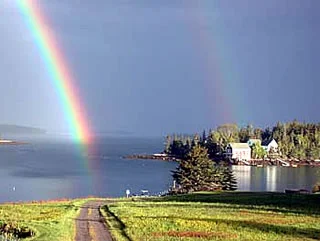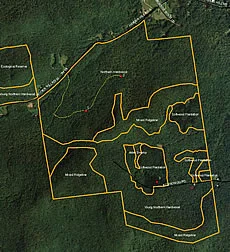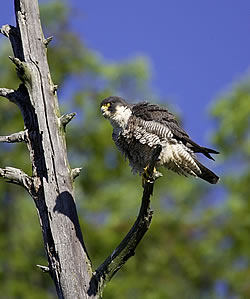by Alison Wagner
Blue is not a common color when I think of food. Likewise, this particular day was unusual as I witnessed a scene I might never see again. And although it will always be memorable for me, it may have been just another normal day for a certain predator. Welcome to Ali’s Bed and Breakfast for the Birds.
The day had just begun as a hint of light filtered through the trees. It was late November, when snow occasionally blankets the ground and the sun makes an appearance late in the morning. Climbing the basement stairs, I shut off my I-pod. So why was I still hearing birds?
I had been listening to my Birdjam, an iPod downloaded with thousands of bird songs. I use this to study species. This strategy works well because it’s too hard for me to identify birds by sight alone. Birds hide so well and foliated trees in the summer can make it even more challenging. Add to this, my visual memory isn’t a personal strength and the binoculars I used to use were crummy.
But…I had shut off my iPod. Why was I hearing the raucous shrieks of a party of Blue Jays? I could tell by their tone that they were upset. Under the birdfeeder, in a few inches of snow, I found the answer: A Merlin. She was barely visible, matching the drabness in the faint light of the morning, and at first I did not see her. She appeared to materialize right before my eyes. But a Merlin is a small falcon, not a magician. She was brown on her backside, with drab streaks on her belly, and wide bands of brown and gray on her tail. A dark eye-stripe made it appear she was wearing a mask. She’s a bird of prey, a surprise visitor at the Bed and Breakfast, moving from her summer residence to warmer climes for the winter.
Or is she is a magician, the way her lightning speed made her appear out of thin air, tricking an innocent creature that let its guard down just long enough…For under the Merlin, pinned to the ground, as if engaged in a wrestling match, was a Blue Jay. I imagined the jay was at the birdfeeder and the opportunistic hunter dive bombed and struck the jay down in a surprise attack.
The party of jays in trees surrounded the wrestling match. Now, obviously this was no party, but that’s what a flock of jays is called. They are like a family, caring and watching out for each other. Perhaps the jays were sending out warnings to others or were imploring the trapped bird to try harder to escape. The Merlin and Blue Jay were equal in length, but the falcon was much bulkier and more muscular. It was no use. The ruthless Merlin was too strong, her talons and beak too sharp. She held her wings out to balance, like a kid on a boogie board, while she took her prey. I could not watch any longer. I made myself move away, pulled to the kitchen by the whistle of the teakettle. Time to make oatmeal before going to work.
While cutting up nuts and rinsing blueberries, I realized two creatures were preparing meals. Two blue breakfasts. Still hearing the struggle outside, I couldn’t help feeling sorry for the jay. Whenever I get the urge to “rescue” a preyed-upon victim, I remind myself, “every body eats…there is no good guy and bad guy in nature.” Perhaps this past summer that Blue Jay had dined on an egg or two that it had raided from a songbird’s nest. It’s all a balancing act and the jay would now become the next link in the chain.
This was the wild world, right here in my yard. I am not the nature police and so I did not belong there, and should not go outside. This was an opportunity to witness nature without the TV, and it was much better than any PBS program. It was a purely live. “Everybody eats,” I told myself again as I carried my steaming hot oatmeal to the table.
The day was finally bathed in warm light and I had to steal one last glance towards the wrestling ring. All I saw was a small crater in the snow so I could now join the scene and go out. A few downy sky-blue and white feathers blew away in the wind. The jay’s family had fled and the Merlin had disappeared. We were done preparing our blue breakfasts and had settled down to eat in peace. Perhaps the Merlin’s success this day will inspire her to come back to this B & B the next time she is passing through.
Bon appetit.









